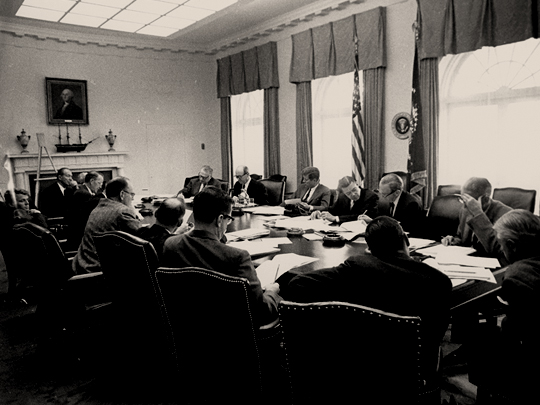National Archives and Records Administration photo / CC-BY-SA-3.0 / GFDL
1 – The Cuban Missile Crisis
The Cuban Missile Crisis was a 13-day (October 16–28, 1962) confrontation between the United States and the Soviet Union concerning Soviet ballistic missile deployment in Cuba.
Along with being televised worldwide, it was the closest the Cold War came to escalating into a full-scale nuclear war.
In response to the failed Bay of Pigs Invasion and American ballistic missiles in Italy and Turkey, Soviet leader Nikita Khrushchev agreed to Cuba’s request to place nuclear missiles in Cuba to deter future harassment.
Khrushchev and Fidel Castro reached the agreement during a secret meeting in July 1962 and construction of missile launch facilities started later that summer.
The Soviet missile preparations were confirmed when an Air Force U-2 spy plane produced photographic evidence of medium-range and intermediate-range ballistic missile facilities.
The United States established a military blockade to prevent further missiles from entering Cuba. They also demanded that the weapons already in Cuba be dismantled and returned to the USSR.
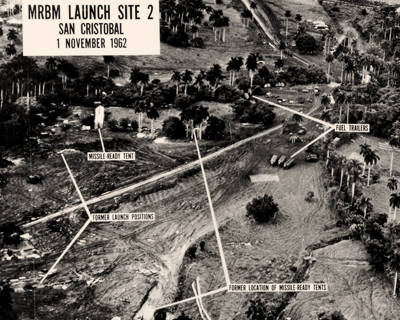
After a long period of tense negotiations, an agreement was reached between President John F. Kennedy and Khrushchev.
Publicly, the Soviets would dismantle their offensive weapons in Cuba and return them to the Soviet Union, subject to United Nations verification.
This would be in exchange for a U.S. public declaration and agreement never to invade Cuba again without direct provocation.
Secretly, the United States also agreed that it would dismantle all U.S.-built Jupiter MRBMs, which were deployed in Turkey and Italy against the Soviet Union but were not known to the public.
When all offensive missiles and Ilyushin Il-28 light bombers had been withdrawn from Cuba, the blockade was formally ended on November 20, 1962.
The negotiations between the United States and the Soviet Union pointed out the necessity of a quick, clear, and direct communication line between Washington and Moscow.
As a result, the Moscow–Washington hotline was established. A series of agreements sharply reduced U.S.–Soviet tensions during the following years.
2 – The US Begins Spraying Foliage in Vietnam Using Agent Orange
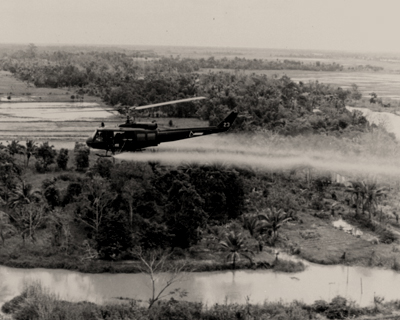
In November 1961, President John F. Kennedy authorized the start of Operation Ranch Hand, the codename for the U.S. Air Force’s herbicide program in Vietnam.
During the Vietnam War, between 1962 and 1971, the United States military sprayed nearly 20 million gallons of chemical herbicides in Vietnam, eastern Laos, and parts of Cambodia as part of the aerial defoliation program.
Like the British did in Malaya, the goal was to defoliate rural/forested land, depriving guerrillas of food and cover and clearing sensitive areas such as around base perimeters.
The program was also a part of a general policy of forced draft urbanization, which aimed to destroy the ability of peasants to support themselves in the countryside, forcing them to flee to the U.S. dominated cities, depriving the guerrillas of their rural support base.
The first batch of herbicides was unloaded at Tan Son Nhut Air Base in South Vietnam, on January 9, 1962. U.S. Air Force records show at least 6,542 spraying missions took place over the course of Operation Ranch Hand.
By 1971, 12% of the total area of South Vietnam had been sprayed with defoliating chemicals, at an average concentration of 13 times the recommended application rate for domestic use.
In South Vietnam alone, an estimated 10 million hectares of agricultural land were ultimately destroyed.
In some areas, TCDD concentrations in soil and water were hundreds of times greater than the levels considered safe by the U.S. Environmental Protection Agency.
The campaign destroyed 5 million acres of upland and mangrove forests and millions of acres of crops.
Military personnel were told they were destroying crops because they were going to be used to feed guerrillas. They later discovered nearly all of the food they had been destroying was not being produced for guerrillas.
Instead, it was only being grown to support the local civilian population. This contributed to widespread famine, leaving hundreds of thousands of people malnourished or starving.
3 – Three Prisoners Escape from Alcatraz Prison
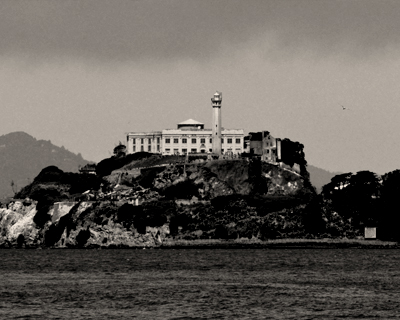
On the night of June 11 or early morning of June 12, 1962, three inmates undertook what may have been the only successful escape in Alcatraz Federal Penitentiary’s history.
Inmates Clarence Anglin, John Anglin, and Frank Morris tucked resembling papier-mâché heads into their beds, broke out of the main prison building via an unused utility corridor, and left the Island on an improvised inflatable raft.
A fourth prisoner, Allen West, was supposed to go with them, but the cement he used to hold his vent in place had hardened.
By the time he managed to remove the grill and reach the roof, the others had already left, leaving West to return to his cell.
Hundreds of leads have been pursued by the FBI and local law enforcement officials in the ensuing years, but no conclusive evidence has ever surfaced favoring the success or failure of the attempt.
Numerous theories of widely varying plausibility have been proposed by authorities, reporters, family members, and amateur enthusiasts.
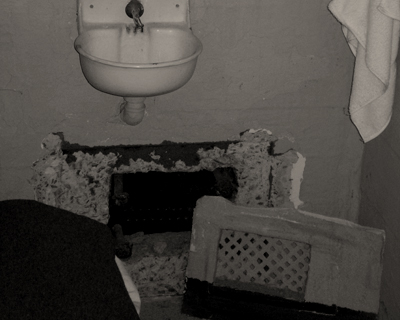
In 1979 the FBI officially concluded, on the basis of circumstantial evidence and expert opinion, that the men drowned in the frigid waters of San Francisco Bay before reaching the mainland.
The U.S. Marshals Service case file remains open and active, however, and Morris and the Anglin brothers remain on its wanted list.
Recent experimental and computer-simulated evidence has suggested that the ultimate outcome of the attempt may have depended on the exact time of the men’s departure aboard the raft.
A 2015 documentary presented circumstantial evidence in support of a longstanding rumor that the Anglin brothers had survived and fled to Brazil.
However, a government expert concluded that the one piece of physical evidence, a 1975 photograph, did not support that conclusion.
4 – The Ole Miss Riot of 1962

Library of Congress Prints and Photographs Division / Wikimedia Commons / CC-BY-SA-3.0 / GFDL
Inspired by President John F. Kennedy’s inaugural address, James Meredith, a black US military veteran, decided to exercise his constitutional rights and apply to the University of Mississippi.
His goal was to put pressure on the Kennedy administration to enforce civil rights for African Americans.
The Ole Miss riot of 1962 was fought between Southern segregationist civilians and federal and state forces beginning on the night of September 30.
The segregationists were protesting the enrollment of Meredith at the University of Mississippi in Oxford, Mississippi.
Two civilians were killed during the night, and over 300 people were injured, including one-third of the US Marshals deployed.
In 1966, Meredith planned a solo 220-mile ‘March Against Fear’ from Memphis, Tennessee to Jackson, Mississippi.
Meredith wanted to highlight continuing racism in the South and encourage voter registration following the Voting Rights Act of 1965. He did not want major civil rights organizations involved.
On the second day, he was shot by a white gunman and suffered multiple wounds.
Leaders of major organizations vowed to complete the march in Meredith’s name. During his recovery in the hospital, people from across the country became involved as marchers.
Meredith went to rejoin the march and when he and other leaders entered Jackson on June 26, they were leading an estimated 15,000 marchers, in what was the largest civil rights march in Mississippi.
In 2002 and again in 2012, the University of Mississippi led a year-long series of events to celebrate the 40th and 50th anniversaries of Meredith’s integration of the institution
5 – Algeria Gains Independence After 132 Years of French Rule
The Algerian War was a war between France and the Algerian National Liberation Front from 1954 to 1962, which led to Algeria gaining its independence from France.
After major demonstrations in favor of independence and a United Nations resolution, Charles De Gaulle opened a series of negotiations with the FLN, which was concluded with the signing of the Évian Accords in March 1962.
A referendum was held on 8 April 1962 and the French electorate approved the Évian Accords.
The final result was 91% in favor of the ratification of this agreement and on 1 July, the Accords were subject to a second referendum in Algeria, where 99.72% voted for independence.
The planned withdrawal led to various assassination attempts on de Gaulle and attempts at military coups.
Most were carried out by the Organisation de l’armée secrète, an underground organization formed mainly from French military personnel supporting a French Algeria.
The group committed a large number of bombings and murders in both Algeria and the homeland to stop the planned independence.
De Gaulle pronounced Algeria an independent country on July 3.
The Provisional Executive, however, proclaimed July 5, the 132nd anniversary of the French entry into Algeria, as the day of national independence.
Upon independence, in 1962, 900,000 European-Algerians fled to France, in fear of the FLN’s revenge, within a few months.
